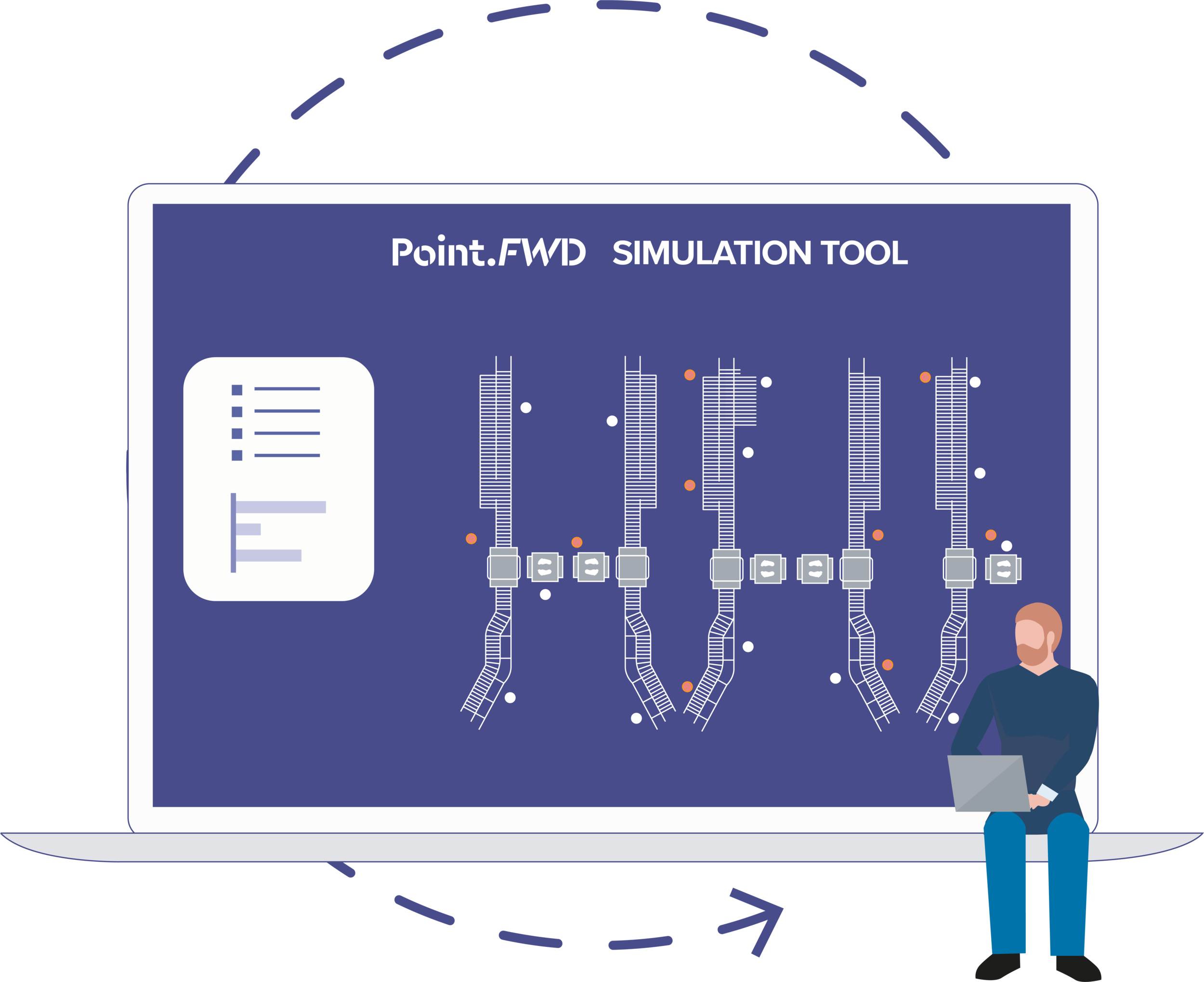Three processes we took a look at: check in, boarding and reclaim processes.
Check-in
At check in the passenger journey starts: the passenger receives his boarding card, and the baggage is checked in. Online check-in is already a reality for many years, which eliminates much hassle for the passenger and the airline. Remote drop-off points, combined with baggage delivery service of the baggage is the next step. “Victory loves preparation” we say at Point FWD. By completing the full check-in procedure, including the baggage handling before even stepping foot in the terminal, the passenger has his hands free when going to the airport. This creates opportunities to spend time on more relaxing parts of the passenger journey.
Boarding
Guiding passengers to the departure gates is a challenge for many airports and airlines. Passenger could get real-time information on an app: about where they are, where their gate is, the distance to the gate and how much time they have available prior to gate-closing. Providing this information reduces stress on passengers. Furthermore, from an airport’s perspective it maximizes the time passengers can spend in the concession zones as people know exactly when they have to start to move towards their gate. This app can also be combined with information about the adjacent processes for a more holistic approach to the full passenger journey.
Reclaim
Way-finding is they key challenge of the reclaim process. On arrival, passengers’ first priority is to reclaim their baggage. Where to go and how to proceed to the reclaim belt? This final process in the passenger journey raises feelings of uncertainty and stress. Besides, being tired after travelling and eager to arrive at the destination are factors that contribute to the challenging process.
People crave location-based and -tracking information – we see that in many industries: from food delivery to taxi services to online shopping. What if passengers are able to track baggage from drop off to reclaim? Sounds good right? A baggage reclaim service app can provide for information in relation to way-finding, live-location of baggage, time estimation on baggage arrival and merchandise offers to ease the waiting time. Or use the baggage-delivery service if that suits you better.























